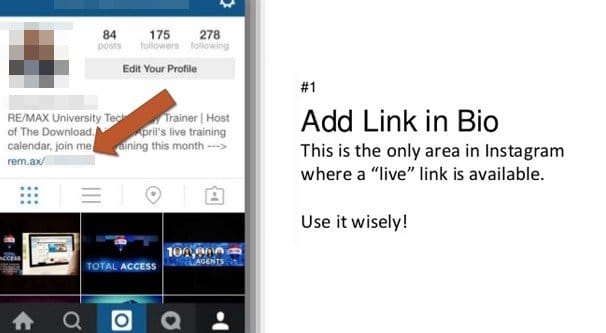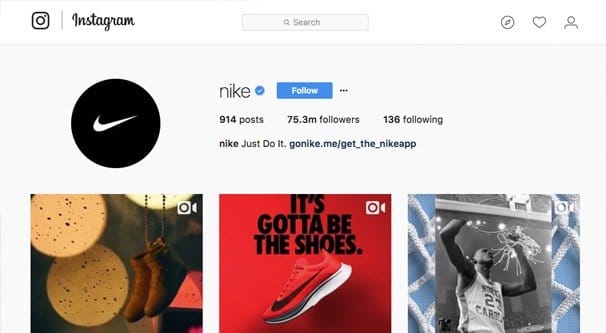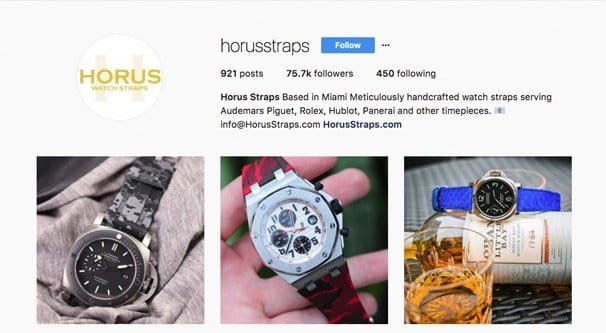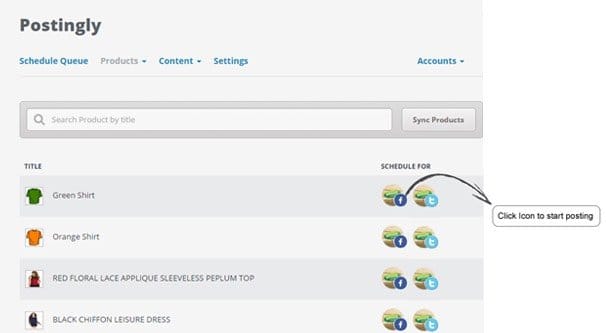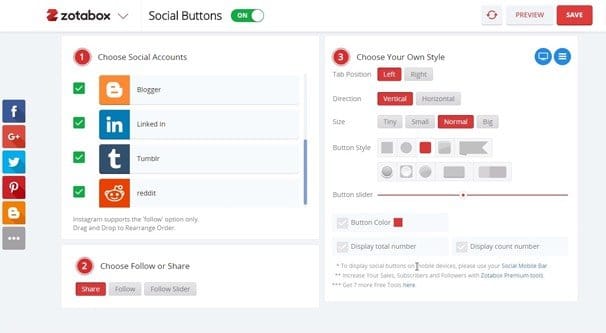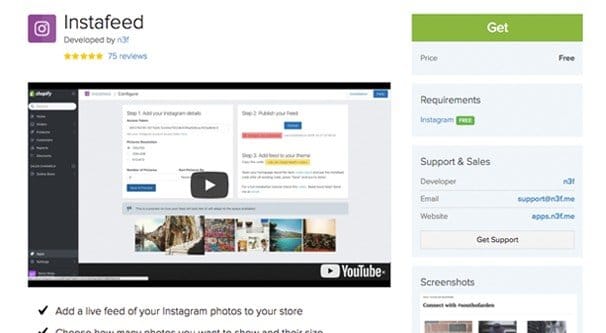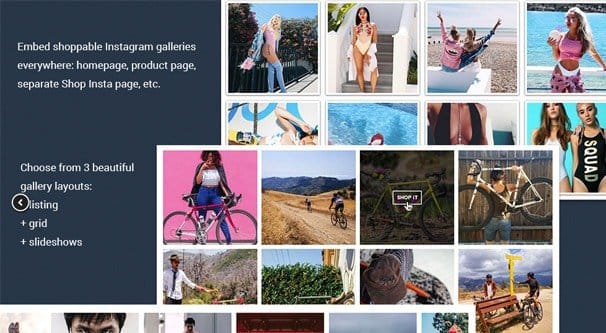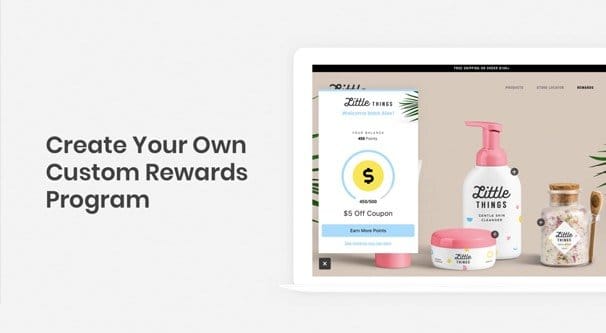 Written by ContentPowered.com
Written by ContentPowered.com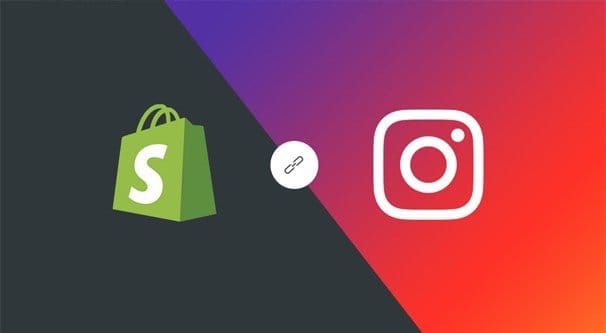
Instagram can be a great platform for anyone running an eCommerce storefront that sells physical products. Attractive images of products, both in a void and in use or in context for their use, can dramatically increase the sales of an item. It’s not a minuscule effect, either; just look at some case studies.
Obviously you’re not just going to let Instagram do the talking. You can’t sell through Instagram, you need to sell through your store. You’ll have product images on your storefront, but you can use Instagram to supplement those images. Say, for example, you have an axe to sell. Your storefront can have images of the axe head, the handle, the full length of the tool, and any detail marks. Your Instagram can have images of a buff man in flannel standing in the woods with it, or the axe embedded in a log balanced on another log. Images of the item in use, in context.
There are a lot of ways to get integration between Instagram and a Shopify storefront, so that’s what I’m going to focus on today. Here are ways you can integrate the two, and tools to help you do it if necessary.
Link Your Store on Instagram
The first and easiest “integration” you can do is to use your link on Instagram to link to your storefront.
What do I mean “your link”? If you’re familiar with Instagram, you know what I’m talking about. If not – for example, if you’re reading this because you’re interested in trying out Instagram – here’s the scoop. On Instagram, you’re only allowed one actual, clickable link. You can’t put links in your image captions. The only clickable link you’re allowed to post is in your bio, and you only get one.
You have two options for this link. First, you can just link to your store homepage. For example, Nike’s Instagram has a very short and simple bio with their tagline and their URL. This is a fine option, but it tends to work best if your storefront is so large that featuring one specific product would be detrimental to the rest of your store.
The other option is to rotate this link out occasionally. You can direct it at specific product pages to try to focus traffic on a given product for a month, or you can link to a landing page where a user might be able to claim a deal, or something of the sort. By rotating out the link, you give existing users something new to see occasionally. On the other hand, when you change the link, any older posts that point to the old link might be out of sync. That’s important if your older posts get a moderate amount of traffic, though this isn’t always the case.
I don’t have any tools for you for this. It’s really not difficult to pick a link and add it to your bio field.
I suppose if you want to get fancy with it, you might consider using some kind of shortlink provider. Many providers, like Bit.ly, have analytics built in and will show you traffic and conversion details on the links you run through their system. You may need a paid account for the most data access, though, particularly historical data. That all depends on whether you want specific data or if you don’t care so long as people reach your shop.
Automatically Post New Products to Instagram
Another way to integrate the two sites – your shop and Instagram, that is – is to make sure whenever you launch a new product, images of it are posted on your Instagram feed. Now, if you’re not prone to launching new products, like if you’re only making one or two and launching a third is a big deal, this isn’t likely to need automation. You can simply just create the posts when your product is due to launch, or schedule a handful of them ahead of time.
On the other hand, many of you run storefronts with frequently updated product lists. One example might be a business selling phone cases. You might only have a handful of different products – the latest couple iPhones, a few Android phones, but only maybe a dozen different cases altogether. However, every case can have dozens or hundreds of different print-on-demand designs you have available.
In this kind of scenario, every time you add a new version of your product to your storefront, you can throw a post up on Instagram as well. You can do it manually, but that’s a lot of work, especially when you have hundreds of different designs. You’d want to space things out, schedule them, make sure you aren’t flooding your feed with spammy images.
There are a handful of different options to manage this for you, but one I’ve seen highly recommended is Auto Post by Posting.ly. Shopify is great because it has thousands of plugins and extensions, much like WordPress. This one is available to auto-post new products to Instagram and other social networks.
When you sign up for the app, it imports your product catalog. This includes link, description, and photos. From there, you can create auto-posting rules for distribution. You might tell it to post a product from your library every day on Twitter. You might tell it to post one product from a specific hashtag each Thursday morning. Additionally, the app automatically detects when a new product is added to your library and can post it or schedule it immediately. The plugin is available for the small fee of $9 a month, which is the same for everyone. Big business or small, 10 products or a thousand, 1 rule or 100; it’s all the same fee.
Taking another look at your storefront, do you have a way for someone to share your products on their favorite social networks? If you have a WordPress blog, there are a ton of different button options. What about for a Shopify store? After all, stores need love too, and you might not be bothering with a stand-alone blog.
Luckily enough, there are a lot of different options for social sharing on Shopify, most of which include Instagram. Let’s look at a few of them, to give you an idea of the options you have available.
- Zotabox Social Sharing Buttons. This social sharing tool has a lot of different features. Social sharing buttons, a contact form, a pop-up, Facebook chat, a Hello Bar, a simple “back to top” button, and a slide box are all free. More advanced versions of those, along with testimonials, store locators, timers, and coupons are all available for a paid subscription.
- Zotabox Mobile Messaging and Social Share Bar. Another Zotabox offering, this one is basically the exact same plugin, except it covers a different selection of social networks with a mobile focus. It adds in options like Skype, Whatsapp, and so forth.
- Dev Cloud Social Share Cart. This just adds a set of attractive and convenient social sharing buttons to your product pages, allowing anyone to share a product they’re looking at or purchasing. It’s $2 a month.
- GetSocial. This is a robust social sharing plugin with two different button styles and built-in analytics. It even has a “viral alert” that will tell you if a page is getting an unusual number of shares.
- Elfsight Social Share Buttons. What do your elf eyes see? In this case, they have three different button positions and over 50 different styles of button, including logos, text names, and even CTA versions of the buttons. It’s $4 per month.
There are other options as well, which you can see just by browsing the Shopify store. AddThis has one, for example. Some have more automation features, some have a wider range of social networks they support, it’s up to you to pursue it. If you want social share buttons – and you do – this is the place to look.
Embed Instagram Images on Your Storefront
If you have a storefront that has a homepage with some content on it, you can make it more attractive by embedding images from your Instagram feed directly on the page. If your Instagram feed posts more than just the same product images as your product pages, this can be very attractive. Take that axe example I made up above; who wouldn’t want images of handsome lumberjacks on the homepage of their store?
Instafeed is probably the best rated and most effective app to integrate Instagram into your storefront. There are a few other options as well, of course, but this one is free, it’s quite highly rated, and it’s effective. They have a couple of negative reviews, mostly about trouble setting it up, but that varies from person to person depending on your technical prowess.
If you’re interested in seeing what Instafeed looks like in action, here are a couple of examples. Red Heart 13 is a storefront for various witchly and occult-themed items, and they photograph very nicely. If you scroll down the page, you can see a feed of their hashtag on Instagram, #redheartcult, and the images people have posted that feature products or even just the general theme of the store.
Another example is D’Adelia, a fashion store in Europe. Down at the bottom of their storefront, you can see a handful of thumbnails beneath a “follow @lojadadelia on Instagram” heading. The images are straight from their Instagram, and embedded so you can see the kind of content you’d be getting if you followed them. You can hover over the images and see the Instagram caption, and you can click them to be taken to the post on Instagram itself.
Make a Sell Gallery
If you want to take things one step further, why not make that embedded Instagram gallery able to sell products directly? With Instafeed, if a user wants to buy a product that’s featured in an image, they have to figure out which product it is and go hunt it down. With something like Shoppable Instagram Galleries, an overlay on the gallery takes them to the product page directly, or even just lets them add to cart without leaving the gallery.
When you connect your Instagram account to this plugin, it fetches your images. You can then create galleries based on just your general feed or specific hashtags. Embed the gallery on your store, and you’re good to go.
Pricing for this particular app starts at free, for one gallery and up to five products. The starter pack is $9 a month and bumps you up to five galleries, unlimited product tagging, and the ability to auto-approve photos that get added to the gallery. The top-level Pro version is $40 and gives you unlimited galleries, embeds Instagram comments, and allows instant purchases.
Run a Loyalty Program
Normally, a loyalty program integrates with a store and encourages repeat customers by giving them points when they purchase. Think about basically every single restaurant, grocery store, or credit card these days; they let you earn money while spending money, at a miniscule return rate.
To integrate Instagram – or other social networks – to this process, you need an incentive. That’s where apps like Smile.io’s Loyalty Points, VIP, Referral Programs app comes in. There are others, but this is one of the more highly rated options. As usual, you can find others by searching the app shop.
Free plans allow you to give loyalty points to people who shop, people who refer other people to make a purchase, people who register for an account, people who share your posts socially, people who follow your social accounts, and more. With a paid plan, you can set up a VIP program for members, set up more advanced plugin customization, and even build off their API for custom options. It’s all very robust.
What other Instagram integrations would you like to see? I’ve probably missed a few possibilities, but I can always count on my loyal readers to point out new options. Let me know in the comments!
